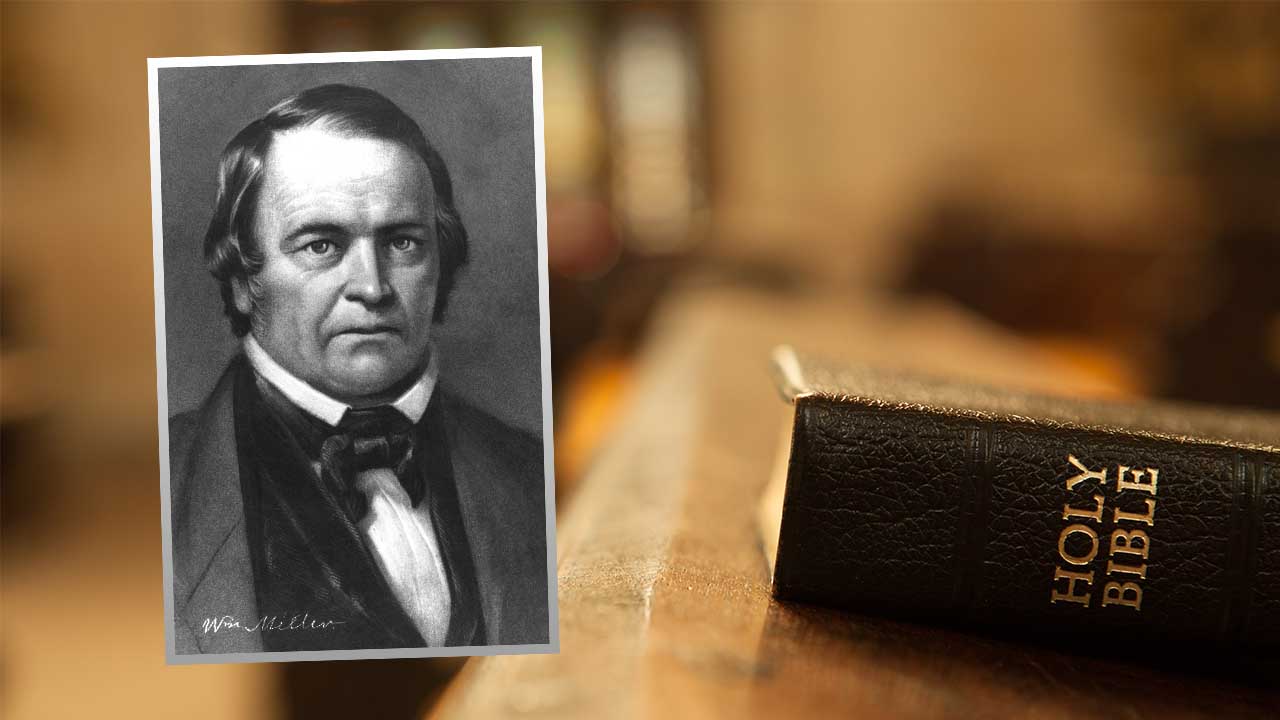Miller’s Rules
Adventists historically have followed a study method which allows for Scripture to explain itself. William Miller practiced and championed this method. Many others followed.
Ellen White wrote of this:
“Those who are engaged in proclaiming the third angel’s message are searching the Scriptures upon the same plan that Father Miller adopted. In the little book entitled ‘Views of the Prophecies and Prophetic Chronology,’ Father Miller gives the following simple but intelligent and important rules for Bible study and interpretation [rules 1-5 cited]. The above is a portion of these rules; and in our study of the Bible we shall all do well to heed the principles set forth.” Review and Herald, November 25, 1884 pars. 23-25.
The following is the entire list, taken from Miller’s book, Views of the Prophecies and Prophetic Chronology.
- Every word must have its proper bearing on the subject presented in the Bible. Matthew 5:18.
- All Scripture is necessary, and may be understood by diligent application and study. 2 Timothy 3:15,16,17.
- Nothing revealed in the Scripture can or will be hid from those who ask in faith, not wavering. Deuteronomy 29:29; Matthew 10:26, 27; 1 Corinthians 2:10; Philippians 3:15; Isaiah 14:11; Matthew 21:22; John 14:13, 14; 15:7; James 1:5, 6; 1 John 5:13, 14, 15.
- To understand doctrine, bring all the Scriptures together on the subject you wish to know; then let every word have its proper influence, and if you can form your theory without a contradiction, you cannot be in an error. Isaiah 28:7-29; 35:8; Proverbs 19:27; Luke 24:27,44,45; Romans 16:26; James 5:19; 2 Pet. 1:19,20
- Scripture must be its own expositor, since it is a rule of itself. If I depend on a teacher to expound it to me, and he should guess at its meaning, or desire to have it so on account of his sectarian creed, or to be thought wise, then his guessing, desire, creed, or wisdom is my rule, not the Bible. Psalms 19:7-11; 119:97-105; Matthew 23:8-10; 1 Corinthians 2:12-16; Ezekiel 34:18,19; Luke 11:52; Malachi 2:7, 8.
- God has revealed things to come, by visions, in figures and parables, and in this way the same things are often times revealed again and again, by different visions, or in different figures and parables. If you wish to understand them, you must combine them all in one. Psalms 89:19; Hosea 12:10; Habakkuk 2:2; Acts 2:17; 1 Corinthians 10:6; Hebrews 9:9, 24; Psalms 78:2; Matthew 8:13, 34; Genesis 41:1-32; Daniel 2; 7; 8; Acts 10:9-16.
- Visions are always mentioned as such. 2 Corinthians 12:1
- Figures always have a figurative meaning, and are used much in prophecy to represent future things, times and events; such as mountains, meaning governments; beasts, meaning kingdoms, waters, meaning people, lamps, meaning Word of God, day, meaning year. Daniel 2:35,44; 7:8,17; Revelation 17:1,15; Psalms 119:105; Ezekiel 4:6.
- Parables are used as comparison to illustrate subjects, and must be explained in the same way as figures, by the subject and Bible. Mark 4:13.
- Figures sometimes have two or more different significations; as day is used in a figurative sense to represent three different periods of time.
1. Indefinite
2. Definite, a day for a year.
3. Day for a thousand years.
If you put on the right construction it will harmonize with the Bible and make good sense, otherwise it will not. Ecclesiastes 7:14; Ezekiel 4:6; 2 Peter 3:8. - How to know when a word is used figuratively: If it makes good sense as it stands, and does no violence to the simple laws of nature, then it must be understood literally; if not, figuratively. Revelation 12:1,2;17:3-7.
- To learn the true meaning of figures, trace your figurative word through your Bible, and where you find it explained, put it on your figure, and if it makes good sense you need look no further; if not, look again.
- To know whether we have the true historical event for the fulfillment of a prophecy: If you find every word of the prophecy (after the figures are understood) is literally fulfilled, then you may know that your history is the true event. But if one word lacks a fulfillment, then you must look for another event, or wait its future development. For God takes care that history and prophecy doth agree, so that the true, believing children of God may never be ashamed. Psalms 21:5; Isaiah 14:17-19; 1 Peter 2:6; Revelation 17:17; Acts 3:18.
- The most important rule of all is, that you must have faith. It must be a faith that requires a sacrifice, and, if tried, would give up the dearest object on earth, the world and all its desires, character, living, occupation, friends, home, comforts and worldly honors. If any of these should hinder our believing any part of God’s word, it would show our faith to be vain. Nor can we ever believe so long as one of these motives lies lurking in our hearts. We must believe that God will never forfeit His word. And we can have confidence that He that takes notice of the sparrow, and numbers the hairs of our head, will guard the translation of His own word, and throw a barrier around it, and prevent those who sincerely trust in God, and put implicit confidence in His word, from erring far from the truth, though they may not understand Hebrew or Greek.

“Father” Miller? What’s that all about?
Great question – that was an endearment often used to refer to older brethren. See the note on 1SM 206 by the compilers: “Older brethren among the pioneers are here thus reminiscently referred to. ‘Father Pierce’ was Stephen Pierce, who served in ministerial and administrative work in the early days. ‘Father Andrews’ was Edward Andrews, the father of J. N. Andrews.”
Pingback: Can We Trust What We Read? – Advent Truth